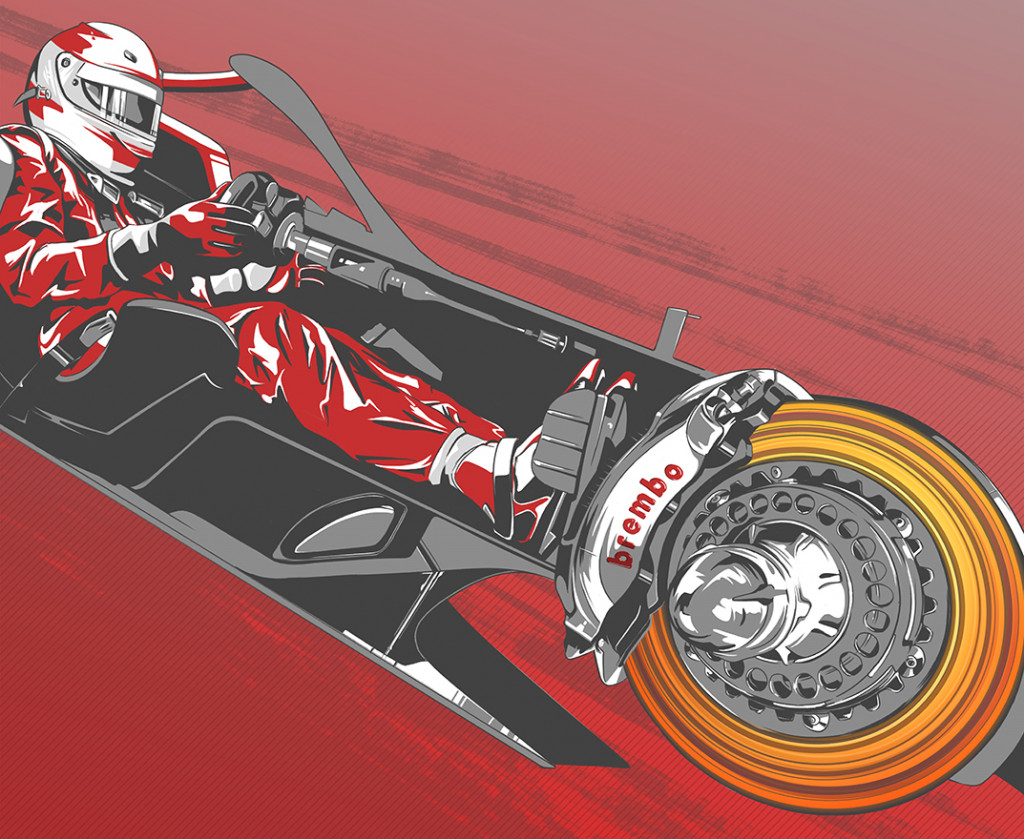Formula 1 race cars are amazing feats of motorsport engineering. Equally as amazing, however, are the LMP1 prototype racers that run in the various endurance events around the globe, including the 24 Hours of LeMans. Each type of cars represents the pinnacle of what's currently possible with a race car. Each is capable of tremendous speed and the production of brutal G forces. How do they stack up with regard to braking power, though? Brembo sat down with its slide rules and calculators to figure out the differences, and the results are quite interesting.
To start, we should examine the weight difference between the two types of cars. That's the heft the brakes have to bring down from high speeds. The minimum weight of a current F1 car is 1,616 pounds, while an LMP1 car weighs between 1,836 pounds and 1,929 pounds. The weight difference for LMP1 depends on a team's decision to run a hybrid or non-hybrid car as the battery pack adds a bit of weight.
The brakes themselves are are also quite different, as they need to behave in very different ways for a number of reasons. First, an F1 race lasts about 100 minutes while a race like the 24 Hours of Le Mans lasts much longer. During an F1 race, the driver will hit the brakes around 350 times, but that's nothing compared to the 4,000-plus times the brakes are applied during a 24-hour endurance race. Still, both brake discs are built using carbon as that's the best material for the task of consistent, fade-free stopping.

Formula One vs LeMans LMP1 brakes
On the F1 car, the brakes are much smaller. That's because the Formula 1 regulations require a wheel size of just 13 inches. LMP1 cars, by comparison are allowed to run 18-inch wheels and therefore have larger diameter rotors. As a result, the F1 brakes can only be 10.95 inches in diameter, while the LMP1 brakes can be as large as 14.96 inches in diameter up front and 13.98 inches out back. Both rotors, however, are a maximum of 32 mm thick.
Each type of race car faces a unique problem, and it allows Brembo to tailor the discs to suit the different applications. On an F1 car, the discs can climb as high as 1,832 degrees Fahrenheit during heavy braking. This means that the Brembo engineers need to supply brakes that can quickly dissipate all of that heat through differing brake ventilation strategies. An F1 brake rotor has 900, 1200, or 1400 ventilation holes and the amount is dictated by the various teams as to which their driver prefers.
For the LMP1 cars, the problem is quite different. Here teams don't want as much heat dissipation because they can't have their disc temperature drop below 662 degrees F. This could occur during the colder nighttime portions of the race, and if it does the brake material could glaze over and seriously hamper braking efficiency. LMP1 cars also only get to about 1,472 degrees F. To keep the temperatures in the sweet spot, the brakes have 430 ventilation holes and Brembo offers friction materials for the discs and pads that have a more efficient thermal conductivity.

Brembo dissects the brakes of an F1 race car
So how exactly do the cars stack up with respect to actual braking performance? The F1 car has the edge here. Brembo has found that an F1 race car can shed more than 55 mph of total speed in just one second. By comparison, the best LMP1 cars drop about 43 mph of speed in the same period. These figures change a bit depending on the circuit and conditions, but the F1 car always comes out a bit ahead. Still, the LMP1 car has to deliver consistency for a far longer period of time.
It's a delicate dance and one that's crucial to both driver safety and to winning. Head to Brembo's website to read the full report.
